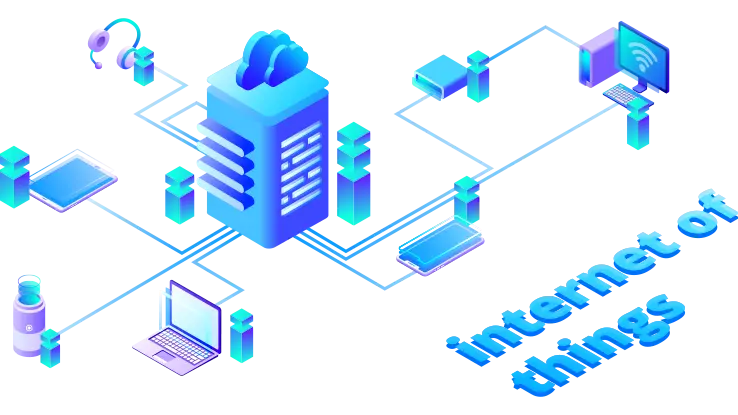To enhance human well-being, we’ve been delving and expanding the IoT for decades since its advent in the 1980s.
Do you know the original conception related to the IoT (Internet of Things)? It derived from the desire to use smart devices to allow a Coca-Cola vending machine at Carnegie Mellon University to report its inventory and whether newly loaded drinks were cold or not. It attempted to make that refreshing and cold sip of Coca-Cola available to everyone when they want.
The IoT then formed and evolved into the integration of people, processes, and technologies with connectable devices and sensors to enable remote monitoring, status, manipulation and trend assessment of such devices. IoT enables the communication between people and things, and between things and things.
The applications of IoT have been divided into four major categories
consumer, commercial, industrial and infrastructure spaces. As the giants in the IoT industry indicated, today and in the future, it is an interconnected world where we live. Considering the ultimate appeal of mankind, what kind of well-being the IoT has brought to us and how?
IoT enhances human well-being in all aspects of life and work.
The home we live in
IoT makes Smart Home possible. When we are at home, the smart home ecosystem, including lighting, heating and air conditioning, media, and security systems, will bring unprecedented convenience and pleasure. We can control home appliances remotely. For example, the Apple HomeKit or Google Home allows voice control of appliances to free our hands from the tedious chores.
We can monitor the electricity consumption of the home appliances and thus save energy for the long-term welfare of human beings. Even when we are out, we do not need to worry about our personal properties because of the smart security system with smart door sensors, cameras, etc. A smart home comforts you all the time.
The city we live in
Some cities have been transformed into smart ones with the help of IoT. Digital and intelligent urban management helps those cities build up a perfect infrastructure system. Residents benefit a lot by the improved air, water quality, and reduced pollution. Smart city brings convenience as the linkage of Smart Lighting, Smart Parking, Smart Transportation, Smart Kiosks, etc.
Consumer places we go
More and more IoT devices are created for consumers, and the smart home just mentioned also belongs to the consumer field. In addition to the consumer, the other end of the consumption chain is the provider (merchant). Merchants have already created a lot of possibilities with IoT. In restaurants, we can order directly on our phones; in malls, we can receive coupons or promotions from the stores we like on our phones; in museums, we can use our phones to navigate and access information about the exhibits. The IoT renovates our consumption more personalized, convenient, and time-saving.
Healthcare we need
IoT triggers a radical change in modern healthcare. Healthcare institutions are gradually getting rid of the burden of tedious work, as the hospital information system (HIS) turned into a more efficient and economical smart healthcare ecosystem relying on IoT devices.
Getting sick is unavoidable, but we can use technology to cease it faster and receive more professional, personalized, and attentive treatment. Some healthcare organizations have already adopted IoT devices, such as asset management devices, sensor devices, and wearables, to create efficient data-based processes. Physicians can provide timely and targeted therapy based on the monitoring data provided by the devices.
What’s more, healthcare no longer refers only to healthcare facilities but also exists in the home with the global aging. The emphasis on elderly care accelerates the development of remote caring, where families or caregivers are relieved of the burden while giving seniors the alone time they yearn for.
Places we work
As more and more organizations and industries implementing IoT solutions, laboring becomes happier with the optimized working environment and increased productivity. Managers should encourage a comfortable and safe working environment for employees, such as monitoring of the temperature and humidity, access control for buildings and offices, and geo-fencing of special areas.
Connecting all objects and staff to the Internet can optimize asset management, space occupation, workflow, and reduce unnecessary troubles. Of course, the human caring brought by technology is more than those. According to an article published by Deloitte, co-written by Tamara Cibenko, Amelia Dunlop, and Nelson Kunkel, your computer could be your personnel working partner that reminds you to take a break. Isn’t that something amazing?
Conclusion
The IoT is growing in a unstoppable way as augmented by the burgeoning technologies and new trends such as 5G, AI, Industry 4.0, etc. IoT is a means to the solution and should be people-oriented. We can use IoT to drive sustainable development. What do you think of the IoT and science technology ethics? Leave your voice.
If you want to learn more about the impact of IoT within various industries or specific optional IoT devices, you can contact us for the latest IoT insights and innovations.

 Chat now
Chat now
